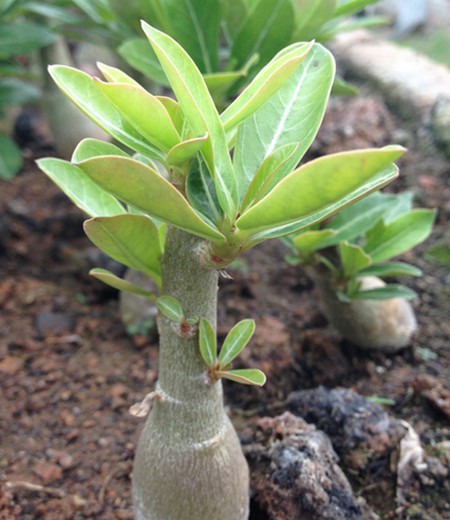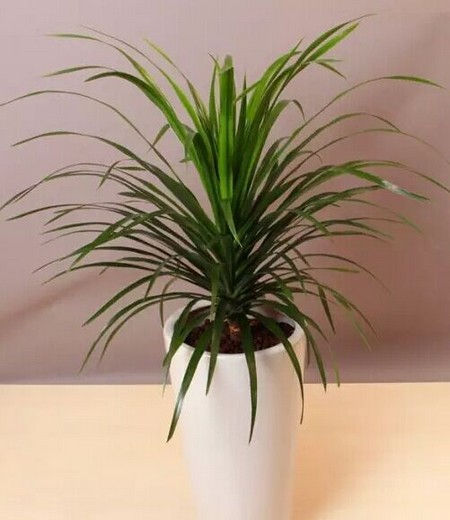Maintenance method of oleander bonsai
Oleander, alias willow leaf peach, half a year red, is a large evergreen shrub of Oleaceae and oleander, with large flowers, dense inflorescences, dense red, double petals and high ornamental value. Native to India, Iran and Afghanistan, it has a long history of cultivation in China, covering both urban and rural areas in the north and south.
Oleander has leaves like bamboo and flowers like peach blossoms, so it is called oleander. Oleander is a very common flower plant in the home courtyard. Let's take a look at the maintenance methods of oleander:
Oleander prefers adequate light, warm and humid climatic conditions. It is also slightly hardy and can survive the winter in the warm temperate zone without falling leaves. Oleander is strong in nature, resistant to barren and drought, and is not strict with the soil, but the pot culture is still better with loose, fertile and permeable common soil, and avoid long-term wet and waterlogging in the basin soil. It has strong resistance to smoke and many kinds of harmful gases.
The base of the old oleander often sprouts into clusters and gives off many twigs. When it grows to 10 cm long, it can be broken off with heel and inserted in fully mature culture soil, shading and moisturizing, and the survival rate is also very high.
Oleander has a strong nature and high and extensive cultivation management. The potted plant turns the pot and changes the soil once every 2 years, and a little feather hoof horn can be put at the bottom of the pot. During the growth period, liquid fertilizer can be applied 1 or 2 times according to the growth trend. Oleander is resistant to pruning and has strong germinating ability. senescent plants can be renewed and pruned in spring combined with turning pots and changing soil to cut off all branches from the base to promote their germination and rejuvenation. In general, the plant should also be moderately pruned in spring to keep the plant well-balanced and strong.
Potted plants in summer should be watered and sprayed frequently to keep the potted soil and the environment moist, but must not be wet for a long time. Oleander also has a characteristic, as long as there is a drought dehydration or water logging, the lower leaves of the plant will soon turn yellow and fall off, so watering should be timely and appropriate. After strong pruning in early spring, you should pay attention to strangling water to prevent root infection and decay. Timely cutting loose pot soil, flowers withered in time to remove, summer occasional aphids and red spiders harm, can be eliminated with general pesticides.
Time: 2019-06-02 Click:
- Prev

Culture methods and matters needing attention of oleander bonsai
Oleander, false bamboo peach also, its leaves like bamboo, its flowers like peach, it is neither bamboo nor peach, hence the name, some people call me willow leaf peach. It likes light, warmth, drought tolerance, planted in the open air, almost without too much management, can grow very well. Once he has survived, he will take the initiative to assume the responsibility of the environmental protection guard around him.
- Next

How to raise the dragon blood tree? The Culture method of Dragon Blood Tree
Dragon blood leaves are graceful and are good materials for all kinds of indoor arrangement. if you can properly reduce the humidity before entering the room and make it adapt to the drier environment, if you often spray water to the leaves after entering the room, you can watch it indoors for a long time and it is not easy to dry the tip of the leaves. The maintenance of dragon blood tree is mainly divided into two links: cultivation and future nursing.
Related
- Fuxing push coffee new agricultural production and marketing class: lack of small-scale processing plants
- Jujube rice field leisure farm deep ploughing Yilan for five years to create a space for organic food and play
- Nongyu Farm-A trial of organic papaya for brave women with advanced technology
- Four points for attention in the prevention and control of diseases and insect pests of edible fungi
- How to add nutrient solution to Edible Fungi
- Is there any good way to control edible fungus mites?
- Open Inoculation Technology of Edible Fungi
- Is there any clever way to use fertilizer for edible fungus in winter?
- What agents are used to kill the pathogens of edible fungi in the mushroom shed?
- Rapid drying of Edible Fungi

